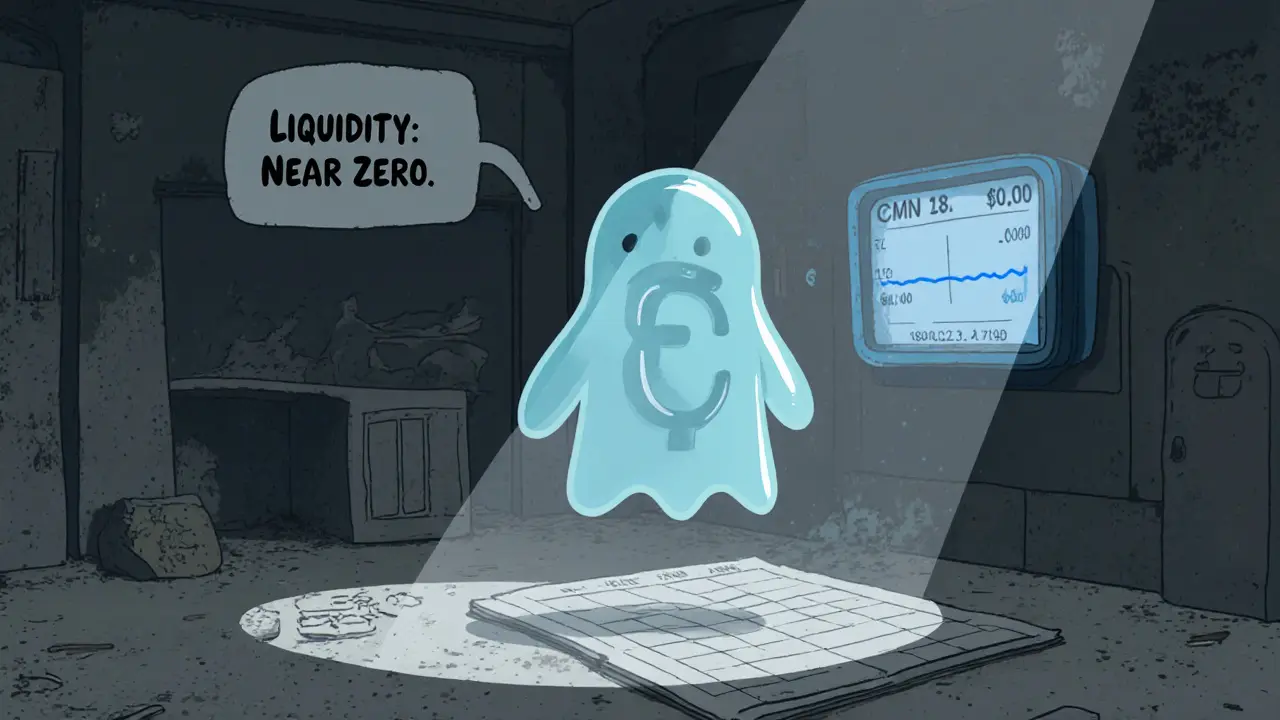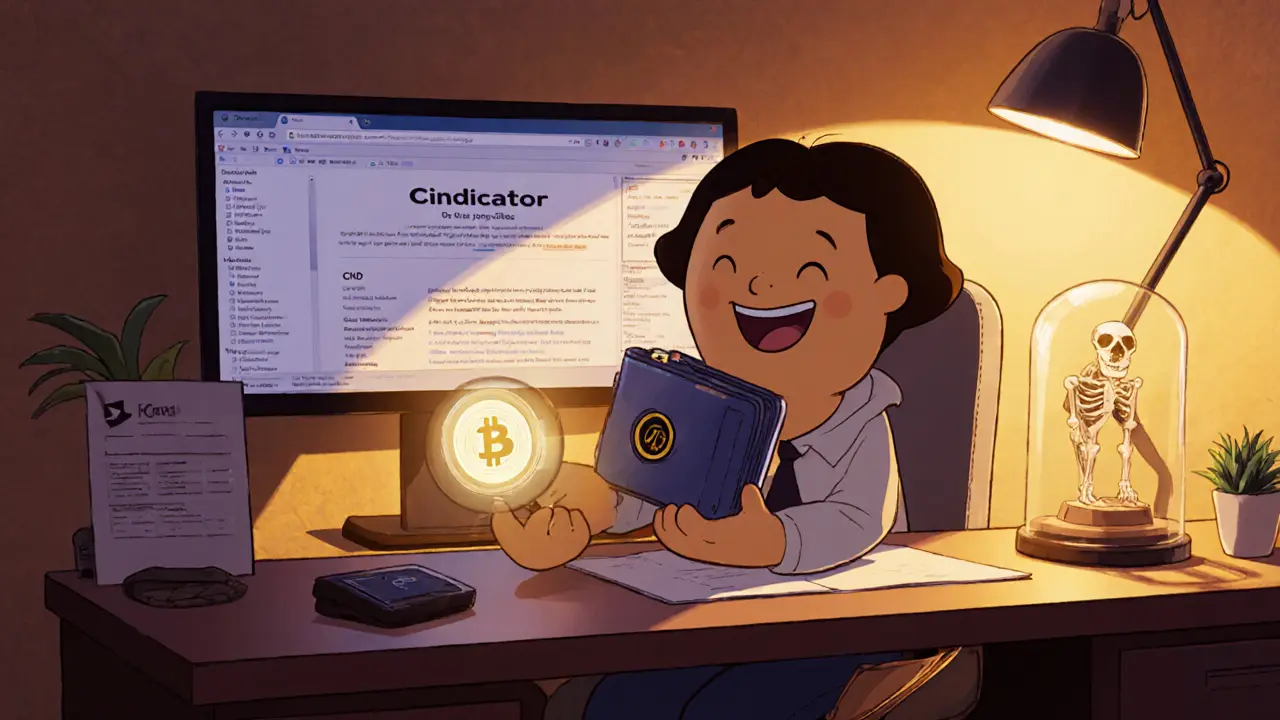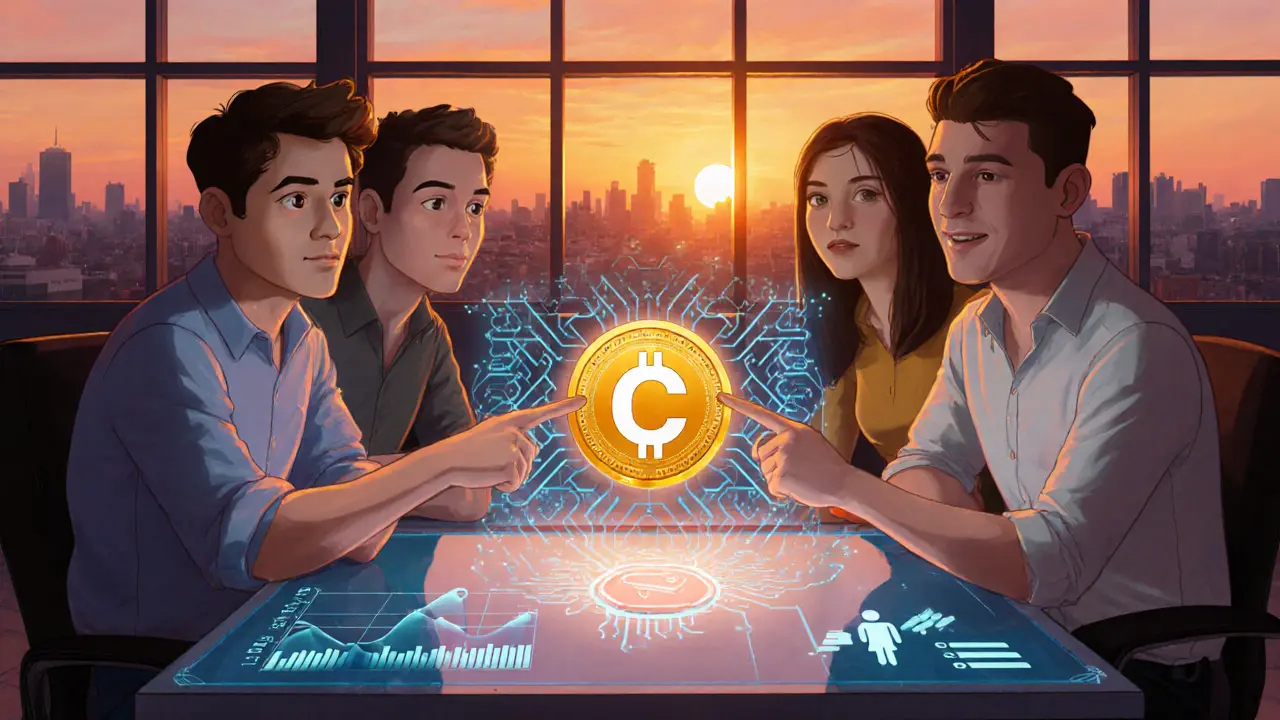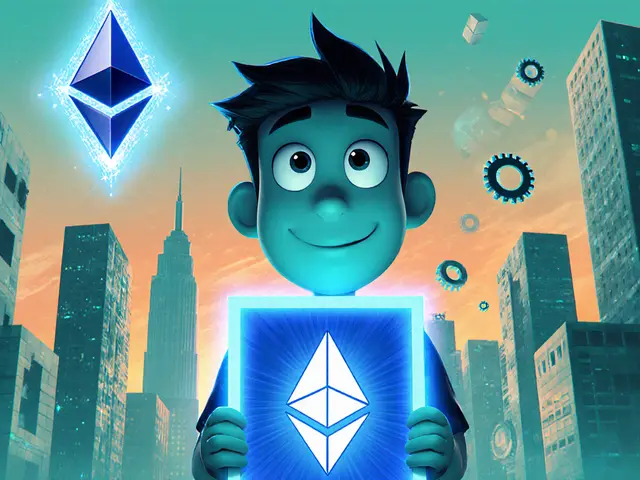Cindicator Value Calculator
Quick Summary
- Cindicator (CND) is an ERC‑20 token launched in 2017 to combine human analysts with AI for market forecasts.
- The token raised $15million in its ICO but now trades below $0.0002, with a market cap around $107,500.
- Liquidity is extremely low - 24‑hour volume is under $10 - making trades costly and risky.
- Development activity stalled after 2021, and community discussion has virtually vanished.
- Compared with peers like Augur (REP) and Gnosis (GNO), Cindicator ranks far behind in market size and usage.
When you first hear the name Cindicator is a decentralized prediction‑market platform that uses a hybrid of human expertise and machine learning to generate financial forecasts. The utility token that powers the ecosystem is called CND. It lives on the Ethereum blockchain as an ERC‑20 contract (0xd4c435f5b09f855c3317c8524cb1f586e42795fa).
How Cindicator Started
The idea was born in 2017 by three Russian entrepreneurs - Evgeny Medvednikov, Igor Shirokov and Michael Shtepman. Their pitch promised a “human‑AI hybrid” that could out‑perform traditional market analysts. The team ran an ICO from September12‑24, 2017, selling 2billion CND tokens at $0.01 each and pulling in roughly $15million.
Early excitement was high. Crypto forums buzzed about the novel approach, and the project made the rounds on ICO watchlists. The promise was simple: buy CND, use it to access premium predictions, and vote on governance decisions.
Tokenomics and Technical Basics
Cindicator’s token follows the ERC‑20 standard, which means you can store it in any Ethereum‑compatible wallet - MetaMask, Trust Wallet, MyEtherWallet, you name it. The token has a hard cap of 2billion CND, of which about 1.9billion are already in circulation. The remaining supply is slated to be released gradually, but the schedule stretches over several years, keeping the total supply effectively capped for the foreseeable future.
Key token attributes:
- Contract address: 0xd4c435f5b09f855c3317c8524cb1f586e42795fa
- Standard: ERC‑20 on Ethereum
- Total supply: 2billion CND
- Current circulating supply: ~1.9billion CND
- Utility: Pay for prediction services, stake for governance, earn rewards for providing data
Current Market Performance (as of October2025)
Even though the token’s contract is still alive, real‑world activity is almost nil. The latest price sits around $0.000186, a 98% dip from the ICO price. Market‑cap calculations put Cindicator at roughly $107,500, placing it well outside the top5,000 cryptocurrencies.
Liquidity is the biggest red flag. In the past 24hours, total trading volume hovered near $9 - essentially zero for anyone trying to buy or sell without moving the market price dramatically. Most exchanges list CND on obscure pairs, and large‑order slippage is inevitable.
Technical charts show a narrow trading range: support near $0.000166, resistance at $0.000455. The simple moving average (SMA) lingers around $0.000185, and Bollinger Bands are tightly squeezed, indicating very low volatility - not because the token is stable, but because there’s practically no trade activity.

How Cindicator’s Hybrid Intelligence Works
The core product promised a two‑layer forecasting engine. First, a community of vetted analysts would submit market predictions. Second, a suite of machine‑learning models would ingest those human inputs plus raw market data, then output a consensus forecast. Users could pay for the insights with CND tokens.
In theory, combining human intuition with algorithmic speed creates an edge over pure‑AI or pure‑human approaches. In practice, the platform never scaled its analyst network, and the AI pipelines stopped receiving fresh data after the team’s funding ran low. The result is a largely dormant prediction service that lacks the data required for accurate forecasts.
Community, Development, and Adoption
Active community engagement is a make‑or‑break factor for any crypto project. Cindicator’s forums, Reddit threads, and Telegram groups have all gone quiet. The official website (cindicator.com) shows a skeletal landing page with dead links. GitHub repositories have not seen a commit since February2021, and there are no recent blog posts or roadmap updates.
Because the token’s utility hinges on accessing prediction services, the lack of an operational platform essentially strips CND of any real function. Holders can still store the token, but there’s nothing to spend it on.
Comparison With Similar Prediction‑Market Tokens
To put Cindicator’s situation into perspective, here’s a quick side‑by‑side look at three well‑known prediction‑market projects.
| Metric | Cindicator (CND) | Augur (REP) | Gnosis (GNO) |
|---|---|---|---|
| Market Cap | ~$0.1M | ~$150M | ~$120M |
| 24h Volume | $9 (near zero) | $3.2M | $2.8M |
| Supply (circulating) | 1.9B CND | ≈11M REP | ≈10M GNO |
| Primary Use‑Case | Hybrid AI‑human forecasts (inactive) | Decentralized prediction markets | Prediction markets & staking |
| Active Development (last commit) | Feb2021 | Jan2025 | Feb2025 |
The table makes it clear why Cindicator is often labeled a “zombie token.” Its market cap is minuscule, daily trading is practically nonexistent, and the codebase has been dormant for years. Augur and Gnosis, while not towering giants, still see regular development, community activity, and usable markets.

How to Hold or Trade CND (If You Still Want To)
- Open an Ethereum‑compatible wallet (MetaMask is the easiest).
- Copy the contract address:
0xd4c435f5b09f855c3317c8524cb1f586e42795faand add a custom token entry. - If you manage to find an exchange that lists CND (few obscure DEXes still do), use a small amount to test the waters. Expect high slippage.
- Keep in mind that withdrawing to a centralized exchange may cost more in gas than the token’s value.
Because liquidity is so thin, most users treat CND as a collector’s item rather than a tradable asset.
Risks and Future Outlook
Investors should weigh three major risks:
- Liquidity risk: Near‑zero volume means you might not be able to sell without taking a huge loss.
- Utility risk: No active prediction service means the token offers no functional advantage.
- Development risk: No code updates since 2021 suggest the project is effectively abandoned.
Analysts from CoinGecko and CryptoRank label Cindicator as “underperforming” and rank it among the worst‑ROI ICOs of 2017. Unless the core team resurfaces with a renewed product roadmap and fresh funding, the token will likely remain a niche holding with negligible market relevance.
Bottom Line
If you’re looking for a prediction‑market token that you can actually use, Cindicator is not the answer. Its innovative hybrid‑intelligence concept never materialized into a functional platform, and the token now lives in a dormant state with almost no traders. For collection purposes or for those who bought in during the ICO, it can be stored safely in any ERC‑20 wallet, but don’t count on any future upside without a dramatic revival of development and community interest.
Frequently Asked Questions
What is the primary purpose of the CND token?
CND was designed as a utility token to pay for AI‑enhanced market forecasts and to vote on governance decisions within the Cindicator ecosystem. Today the platform is inactive, so the token no longer serves a functional purpose beyond being an ERC‑20 asset.
Can I still trade CND on major exchanges?
Only a handful of obscure decentralized exchanges list CND. Major exchanges have delisted it, and the 24‑hour volume is under $10, making meaningful trades impractical.
How does Cindicator differ from Augur and Gnosis?
Cindicator aimed to combine human analysts with AI, while Augur and Gnosis focus purely on decentralized prediction markets built on smart contracts. In practice, Augur and Gnosis have active communities, larger market caps, and ongoing development, whereas Cindicator’s platform is dormant.
Is it safe to store CND in a hardware wallet?
Yes. Since CND is an ERC‑20 token, any hardware wallet that supports Ethereum (Ledger, Trezor) can safely hold it. Just be aware that the token has little to no usage.
What are the chances of Cindicator reviving its platform?
Analyst consensus is low. Development stopped in 2021, community activity is virtually absent, and no new funding has been announced. A revival would require a fresh team, significant capital, and a clear roadmap, all of which are currently missing.




Comments
CND is basically dead weight.
The token architecture is theoretically sound yet practically inert. Its ERC‑20 compliance ensures wallet compatibility, but the absence of active market‑making renders it a static ledger entry. From a systems perspective the hybrid AI‑human model suffered from data starvation post‑2021. Consequently the utility layer never achieved network effects.
Cindicator started with lofty ambition to merge human insight with machine learning and that vision still resonates with many. The founders were early adopters of the hybrid forecasting paradigm and they managed to raise a respectable ICO round. Over time the promised analyst community never scaled to a critical mass and the AI pipelines stalled due to funding gaps. Liquidity dried up as exchanges delisted the token and traders moved to more active prediction markets. The market cap now sits at a fraction of its original valuation making it a textbook case of an under‑performing ICO. Investors who held on for the long term have essentially watched their holdings become dust. The ERC‑20 token remains technically functional but without an active service it offers no real utility. Storage in hardware wallets is safe but that’s about the only advantage left. Community channels have gone silent, and the GitHub repository shows no commits since early 2021. In contrast projects like Augur and Gnosis continue to develop and retain user bases. The stark difference highlights the importance of sustained development and community engagement. If the team were to secure fresh capital and restart the analyst onboarding program, there might be a glimmer of revival. As it stands, CND is more of a collector’s novelty than a tradable asset. The price action reflects near‑zero volume, meaning any sizeable order would devastate the market. Potential buyers should be prepared for extreme slippage and high gas costs relative to the token’s value. In short, unless a dramatic turnaround occurs, CND will likely remain a niche holding with negligible upside.
Wow you really think this thing could bounce back? The hype train left the station years ago and never returned. Even if the devs magically re‑appear, the community that once mattered is gone. No one’s lining up to vote on predictions anymore. It’s a relic, not a revival.
Respectfully, I’d advise newcomers to treat CND as a historical artifact rather than an investment. Holding it in a secure wallet won’t hurt, but don’t expect any functional payoff.
That’s a fair point, Chris. While the token’s utility is dormant, its on‑chain data could still be useful for academic analysis. If researchers mine the transaction history they might uncover patterns relevant to market sentiment studies. Plus, some collectors enjoy preserving such obscure assets for future curiosity.
So CND is basically a dead meme? 😂😂 No wonder I never saw it on any major exchange. Guess it’s just another crypto graveyard.
Ha, you think it’s a meme? That’s exactly why people keep buying junk like this. It’s all about the hype and you’re just a sheep.
Did you know that some “dead” tokens are secretly controlled by hidden smart‑contract backdoors? It’s possible CND still holds unseen functions that could be triggered later. Stay wary.
That conspiracy angle is a stretch. The contract code is publicly audited and shows no hidden triggers. The real issue is simply a lack of demand and development.
Oh great, another “expert” saying it’s just dead. Newsflash: many tokens die, but the market loves to resurrect the most absurd ones. CND could be the next comeback story if someone pumps it hard enough.
I see where you’re coming from, Devi, but the data doesn’t support a realistic revival. The community is gone, the code is stale, and without fresh funding the odds are slim.
For those still curious, it is perfectly safe to store CND in a hardware wallet. The ERC‑20 standard ensures compatibility with Ledger and Trezor devices. However, please be aware that there are no active use‑cases for the token at this time.
While the advice is sound, I must point out that labeling CND as “safe” might mislead readers into thinking there’s hidden value. In reality, it is merely a dormant token with negligible market relevance.
Let’s focus on the practical side. If you already own CND, keep it in a secure wallet and consider it a long‑term collector’s item. Do not expect price appreciation unless a major catalyst emerges, which is unlikely. Should you decide to trade, use a small amount to test liquidity on a DEX and be prepared for high slippage. Gas fees on Ethereum can quickly exceed the token’s market value, so factor that into any transaction. Monitoring the token’s contract events can give you insight into any unexpected activity. Engaging with the few remaining community members on Telegram might uncover hidden opportunities. Remember, diversification is key; don’t allocate a large portion of your portfolio to a near‑dead asset. Stay informed, stay patient, and treat CND as a curiosity rather than a core holding.
Good points, Deepak. I’d add that the gas economics on Ethereum make micro‑trades impractical. Also, keep an eye on Layer‑2 bridges; they sometimes list obscure tokens at lower fees.
CND is a total dump, nobody’s buying it anyway.
Even a dump can have a purpose if you’re studying market failure patterns. It’s a case study in what not to do.
In summary, CND remains an inactive ERC‑20 token with minimal utility and extremely low liquidity.